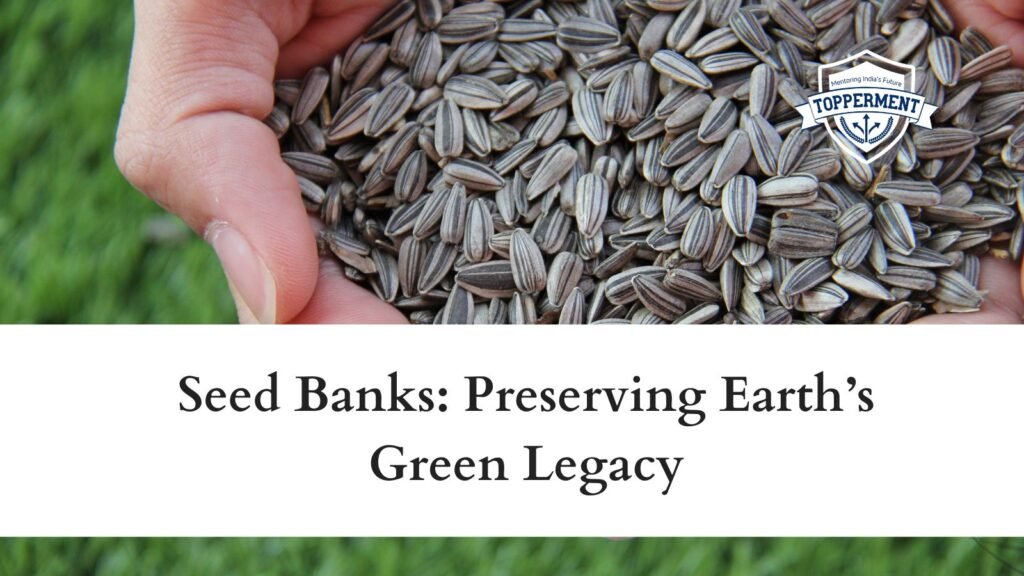Seed banks play a crucial role in safeguarding the diversity of plant species for future generations. They are repositories of seeds collected from various plants, storing them under controlled conditions to ensure their long-term viability.
What are Seed Banks?
- Seed banks are institutions that store seeds from a wide range of plant species.
- To conserve genetic diversity, protect endangered species, and ensure food security.
- Global seed banks, national seed banks, regional seed banks, and community seed banks
Importance of Seed Banks:
Conservation of Genetic Diversity:
- Seeds store genetic information critical for the survival and adaptation of plant species.
- Seed banks protect diverse plant varieties, preserving traits that may be beneficial in the future.
- In case of natural disasters or human-induced threats, seed banks serve as backups for restoring ecosystems.
Protecting Endangered and Rare Species:
- Seed banks collect and store seeds of endangered and rare plant species facing extinction.
- By preserving their genetic material, seed banks offer hope for the future reintroduction of these species into the wild.
Ensuring Food Security:
- Seed banks conserve a wide range of crop seeds, including traditional and heirloom varieties.
- These banks act as reservoirs of genetic diversity, which is essential for developing new crop varieties with improved traits.
- In times of environmental changes or plant diseases, seed banks provide access to resilient seeds for sustainable agriculture.
Functions of Seed Banks:
Collection and Documentation:
- Seed banks collect seeds from diverse ecosystems, including forests, grasslands, and agricultural fields.
- Each seed is carefully documented, noting its origin, species, and other relevant information.
Seed Processing and Storage:
- Collected seeds undergo cleaning, drying, and testing to ensure viability and long-term storage.
- Specialized techniques, such as cryopreservation, are used to freeze seeds at extremely low temperatures, ensuring their long-term survival.
Seed Distribution and Research:
- Seed banks distribute seeds to researchers, farmers, and conservationists for various purposes.
- Researchers study seeds to understand their traits, develop new plant varieties, and improve agricultural practices.
- Farmers can access diverse seeds to enhance crop resilience and adaptability.
Seed banks serve as invaluable guardians of the Earth’s green legacy. By conserving and protecting the genetic diversity of plant species, they contribute to the sustainability of ecosystems, food security, and the future well-being of our planet
Also Read
- What Are The Significance Of Fundamental Rights? | UPSC Polity
- What Are The Sources Of Indian Constitution? | UPSC Polity
Follow Us For More Content On:
https://www.instagram.com/topperment/


